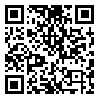Volume 17, Issue 5 (7-2018)
ijdld 2018, 17(5): 257-263 |
Back to browse issues page
Download citation:
BibTeX | RIS | EndNote | Medlars | ProCite | Reference Manager | RefWorks
Send citation to:



BibTeX | RIS | EndNote | Medlars | ProCite | Reference Manager | RefWorks
Send citation to:
Ghannadiasl F. Food Insecurity Among Type 2 Diabetic Patients Referred To The Nutrition Clinic In Ardabil City. ijdld 2018; 17 (5) :257-263
URL: http://ijdld.tums.ac.ir/article-1-5643-en.html
URL: http://ijdld.tums.ac.ir/article-1-5643-en.html
Department of Food Sciences and Technology, Faculty of Agricultural Sciences and Natural Resources, University of Mohaghegh Ardabili, Ardabil, Iran , ghannadiasl@uma.ac.ir
Abstract: (3596 Views)
Background: Food insecurity is associated with the poor glycemic control. Therefore, this study was amid to determine food insecurity among type 2 diabetic patients in Ardabil.
Methods: In this analytical cross-sectional study, 153 type 2 diabetic patients (98 females and 55 males) were recruited from the nutrition clinic in their first visit in 2016. After measurement of weight and height, the participants were completed 3-day food records (2 weekdays and 1 weekend day). The energy, macronutrients and micronutrients intakes were calculated using N4 food analysis software. Food insecurity was measured by comparisons between the nutrients intakes and recommended dietary allowances. One sample T-Test and Independent sample T-Test were used for comparison.
Results: The mean of age, disease duration and body mass index were 49.56± 7.36 years, 6.34± 5.46 years and 28.55 ± 4.25 kg/m2, respectively. Only one-fifth (19.6%) of participants fell within the normal weight range. The mean energy intake was 1922.20 ± 515.59 kcal/day. The carbohydrate, protein, and fat were contributed to 63.26%, 14.86% and 21.88% of the energy intake, respectively. The micronutrient intakes (calcium, magnesium, vitamins A, E, and C) were less than recommended dietary allowances.
Conclusion: Food insecurity, especially in calcium, magnesium, vitamins A, E, and C intakes was prevalence among type 2 diabetic patients. It is suggested that these patients should be educated based on their dietary requirements.
Methods: In this analytical cross-sectional study, 153 type 2 diabetic patients (98 females and 55 males) were recruited from the nutrition clinic in their first visit in 2016. After measurement of weight and height, the participants were completed 3-day food records (2 weekdays and 1 weekend day). The energy, macronutrients and micronutrients intakes were calculated using N4 food analysis software. Food insecurity was measured by comparisons between the nutrients intakes and recommended dietary allowances. One sample T-Test and Independent sample T-Test were used for comparison.
Results: The mean of age, disease duration and body mass index were 49.56± 7.36 years, 6.34± 5.46 years and 28.55 ± 4.25 kg/m2, respectively. Only one-fifth (19.6%) of participants fell within the normal weight range. The mean energy intake was 1922.20 ± 515.59 kcal/day. The carbohydrate, protein, and fat were contributed to 63.26%, 14.86% and 21.88% of the energy intake, respectively. The micronutrient intakes (calcium, magnesium, vitamins A, E, and C) were less than recommended dietary allowances.
Conclusion: Food insecurity, especially in calcium, magnesium, vitamins A, E, and C intakes was prevalence among type 2 diabetic patients. It is suggested that these patients should be educated based on their dietary requirements.
Type of Study: Research |
Subject:
Special
Received: 2017/08/15 | Accepted: 2018/07/16 | Published: 2018/07/15
Received: 2017/08/15 | Accepted: 2018/07/16 | Published: 2018/07/15
Send email to the article author
| Rights and permissions | |
 |
This work is licensed under a Creative Commons Attribution-NonCommercial 4.0 International License. |





